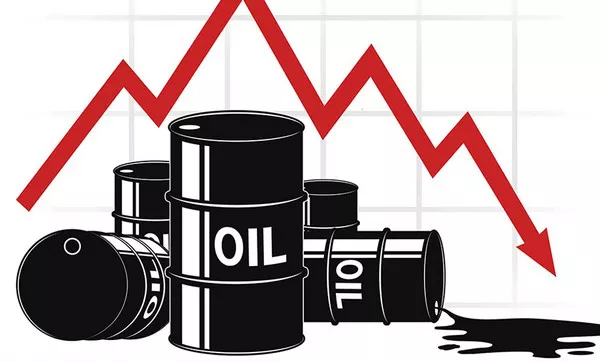Oil prices experienced a drop during the early Asian trading hours on Thursday, following the most significant decline in a month in the previous session. The impact of drawdowns in U.S. crude stockpiles was outweighed by rising expectations of a U.S. interest rate hike.
Brent futures for November delivery slipped by 71 cents, or 0.76%, to reach $92.82 per barrel by 0608 GMT. Concurrently, U.S. West Texas Intermediate crude (WTI) fell by 70 cents, or 0.78%, to $88.96, marking its lowest level since September 14.
ING analysts noted, “The Fed kept rates unchanged at yesterday’s FOMC meeting, as widely expected. However, it was still seen as a hawkish pause, which put some pressure on risk assets” such as oil.
The U.S. Federal Reserve, after its Federal Open Market Committee (FOMC) meeting, opted to maintain interest rates but conveyed a stiffer hawkish stance by projecting a rate hike by the year-end. This hawkish stance raised concerns of potentially dampened economic growth and overall fuel demand. Fed policymakers foresee the bank’s benchmark overnight rate range peaking this year at 5.50% to 5.75%, a quarter of a percentage point above the current range.
The stronger dollar that ensued from the hawkish Fed statement also contributed to downward pressure on oil prices. A robust dollar typically makes commodities, including oil, more expensive for buyers using other currencies.
Despite data from the U.S. Energy Information Administration (EIA) showing a decline in crude inventories in line with expectations last week, energy markets exhibited minimal reaction. Some analysts believed the inventory drawdown was smaller than anticipated.
ANZ analysts noted, “EIA data showed U.S. stockpiles fell 2.14 million barrels last week, well short of the 5.25 million barrel drop reported by the American Petroleum Institute. The disappointing inventory drawdown gave impetus for traders to lock in profits following the 10% gain since the start of the month.”
The decline in stocks was primarily driven by robust oil exports, while gasoline and diesel inventories decreased as refiners initiated their annual autumn maintenance, according to the EIA.
Nonetheless, concerns over tight supply conditions worldwide entering the fourth quarter continued to exert influence. Crude stocks at Cushing, the WTI delivery hub, were at their lowest levels since July 2022, and OPEC+ continued its production cuts, maintaining the market’s supply tightness.
Several analysts anticipate oil prices to remain supported in the near term. ANZ analysts remarked, “A few more drawdowns could revive talks of tanks reaching their operational minimum … With the production cuts by Saudi Arabia and the broader OPEC+ alliance expected to remain for the rest of the year, inventories will likely touch record lows.”
ING analyst Warren Patterson stated, “Our balance shows a deficit of more than 2 million barrels per day through the fourth quarter of this year. This tightness, along with strong refinery margins (largely a result of tightness in middle distillates), suggests that oil prices are likely to see further strength in the short term.”


